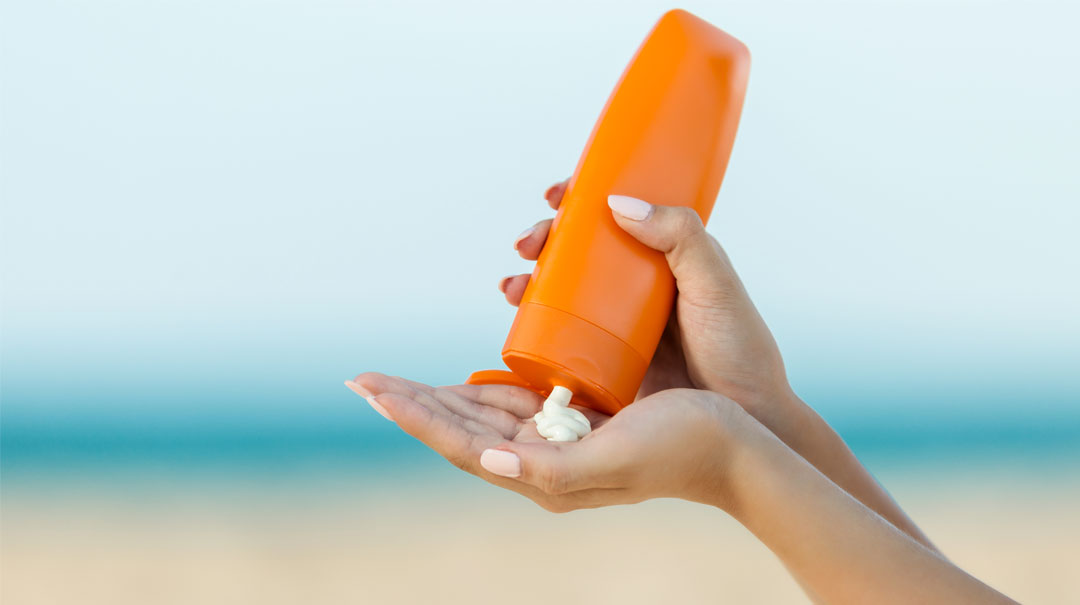Find care now
If you are experiencing a medical emergency, please call 911 or seek care at an emergency room.

Skin cancer is the most common form of cancer, with 9,500 people in the U.S. diagnosed each day. Fortunately, it’s also the most preventable.
Here are some things you can do to reduce your risk of developing skin cancer.
Skin Cancer: What Is It? What Causes It?
Skin cancer is a cancerous growth of skin cells. The three most common types are basal cell carcinoma, squamous cell carcinoma, and melanoma.
Ultraviolet (UV) damage, whether due to sun exposure or tanning beds, is a major contributing factor for skin cancer. Tanning beds are now also classified by the WHO as a class 1 carcinogen.
Most people are familiar with the short-term effects of a sunburn, such as pain, redness, blistering, and peeling. What many people don’t realize is that ultraviolet light also damages DNA. While the redness and peeling can heal, the underlying DNA damage remains. Repeated damage accumulates and this cumulative effect can lead to skin cancer.
#Sunburns are painful and inconvenient, but did you know they also damage your #DNA? Dr. Min Deng discusses how wearing #sunscreen helps protect you from #skincancer. https://bit.ly/2BoWVGx via @MedStarWHC
Click to Tweet
Some people are more naturally susceptible to skin cancer than others. Intrinsic risk factors for skin cancer include having fair skin, blue eyes, and/or red hair. Individuals with lighter complexions are more vulnerable to the damaging effects of the sun. A person whose parent, sibling, or child has a history of skin cancer is also at greater risk of developing the condition.
How Can You Protect Your Skin?
The good news is that there are many steps you can take to protect your skin from harmful UV radiation.
• Wear Sunscreen
If you spend time outside, protect your skin by wearing a broad-spectrum sunscreen.
There are two main types of sunscreen: chemical and mineral. Chemical sunscreens contain many different active ingredients, with each chemical working to absorb a different wavelength of light. Mineral sunscreens, sometimes called “sunblocks,” can include zinc oxide and/or titanium dioxide. Rather than absorbing the sun’s rays, mineral sunscreens sit on the skin and reflect UV rays.
If possible, I recommend choosing a mineral sunblock over a chemical sunscreen. The ingredients in chemical sunscreens can irritate sensitive skin, and there is also evidence that these chemicals are harmful for corals and other marine life. However, any sunscreen is better than none at all!
To get the full SPF value that’s listed, it should be applied in quantities of 2 mg/cm2. I recommend applying it every two hours, or every hour if you are swimming or perspiring a lot, since these products can degrade. Cream products are best for your first application to ensure full and adequate coverage. I generally recommend spray products more for touch-ups throughout the day.
• Wear Protective Clothing
If you spend time outdoors, whether for work or play, wear protective clothing whenever possible. Long-sleeved shirts, hats, and sunglasses can provide good protection, particularly against the afternoon sun.
If you spend a lot of time in the sun, have your skin checked by a board-certified dermatologist once a year. Having regular checkups is important for establishing your baseline risk and keeping track of changes as they occur.
• Avoid Tanning Beds
Many people believe that tanning beds are a healthier way to get a tan, but this is not true. Tanning beds emit UV rays, often delivered in potent doses. Their use is associated with a significantly increased risk of developing skin cancer, including melanoma, which is why the World Health Organization’s International Agency for Research on Cancer classifies the UV rays emitted by tanning beds as carcinogenic to humans.
LISTEN: Dr. Deng discusses skin cancer on the Medical Intel podcast.
Can Skin Damage Be Reversed?
Damage caused by UV exposure accumulates over time, and unfortunately this damage can’t be reversed. However, there are options for treating precancerous skin lesions, also known as actinic keratoses.
If you have this type of lesion, a dermatologist may suggest field therapy with a topical cream, photodynamic therapy, or a combination to decrease the burden of disease and slow the rate of progression to cancerous growths. I usually recommend that patients with 10 or more such precancerous lesions on any single body site receive field therapy. Your dermatologist will determine the treatment course based on your unique needs.
Though UV skin damage is irreversible, it’s never too late to start taking steps to protect yourself from the sun. Each sunburn increases your risk of developing skin cancer, which means that each avoided sunburn reduces this risk. No matter how much sun exposure you’ve had throughout the years, you still have the power to protect yourself from further damage!
If you’re concerned about changes to your skin, our team of board-certified dermatologists at MedStar Washington Hospital Center can help. We’re here to provide individualized care and assure that you’re informed to make healthy choices regarding your skin.














